Why did the Fed allow the collapse of Lehman Brothers? How did liars loans and fraud become so pervasive throughout the financial sector? Bill Black continues his history of financial fraud on theAnalysis.news with Paul Jay.
Transcript
Paul Jay
Hi, I’m Paul Jay. Welcome to theAnalysis.news, and please don’t forget the donate button, subscribe button, and share and all that kind of stuff, and we’ll be back in a second with Bill Black on more of the series on Control Fraud.
So we’re picking up our discussion with Bill Black about the development of fraud at the lowest, middlest, and highest level of the financial sector that gave rise to the 07/08 financial crash, and then we’re going to get into more about has anything actually changed or are we likely to see it all again? Maybe we already are? Again, there’s a new docuseries titled The Con that Bill helped advise and create. It’s about the 07/08 crash and here’s another trailer from the film.
FILM EXCERPT
“After the Great Depression, we actually look at what caused the problems, and we actually move to fix them. At that point, even though FDR had actually been opposed to Deposit Insurance, he took the bold step of creating Deposit Insurance. And that stopped these kinds of destructive runs, and gave people confidence that they could actually put their money in the bank like you are supposed to, save over ten years, get enough money for a down payment, and buy your home. Glass Steagall, adopted this part of that same legislation and they create the Security and Exchange Commission. Again, to give people confidence that they can do the things we’re told to do. Invest. Right, in a diversified portfolio that good type stuff. Well, that makes sense if it’s an honest system. If it’s dishonest, why would I put my money in that kind of system? In other words, when we stop the crooks we make capitalism work, and only when we stop the crooks.”
“And I’m not saying that regulation is always good or that more regulation is always the answer. It’s not. Ideology would suggest that you are either in favor of regulation or you are against regulation. Well, what if you’re just in favor of smart regulation, better regulation, the most rational regulation possible. Where does that put you? I would suggest at that point you are making evidentiary-based decisions about what works the best, rather than ideological decisions – more regulation, less regulation – which really doesn’t make sense when you think about it. So to me, capitalism and smart regulation go hand in hand. You need them both and one without the other, I just don’t think it works.”
“When somebody can make a loan to somebody knowing that that loan is not … when it resets … when that adjustable-rate comes in, they’re not going to be able to afford this, but I will have gotten my fee as the lender or the broker and I don’t care what happens to this person – and that just … there’s nobody in the government whos going to take a look at that and say ‘oh no you can’t do that to people’. Because in the Pennant Morgage companies they have almost no regulation over them. So this is what you get when you have no regulation. The institutions should not be able to gauge you. They should not be able to con you. They should not be able to cheat you. And if they do, then we have institutions within the government that ensure that those people pay for it.”
“Honesty is good business. Rule of law makes honesty something that can actually prevail in a marketplace. Absent rule of law, and vigorous prosecutors, and regulators – the cheaters will prosper.”
Paul Jay
Now joining us again to discuss the history and state of the control fraud is Bill Black. As I said, he helped advise the filmmakers of The Con. He’s a lawyer, an academic, an author, and former bank regulator, and maybe has the best title of a financial book ever, which is The Best Way to Rob a Bank is to Own One. He’s an associate professor of economics and law at the University of Missouri, Kansas City. Thanks for joining us again, Bill.
Bill Black
Thank you.
Paul Jay
All right. So pick up the story. Now, I don’t know if I’m jumping ahead. Let me ask if I’m jumping ahead. Then you can back up a bit. You talked about how while, none of the big guys went to jail, a lot of the small guys, even though individually made tons of money, a lot of those institutions did go bankrupt, but then one of the big ones, Lehman Brothers, was allowed to tank. Allowed, meaning it wasn’t bailed out. So why did Lehman Brothers get into such trouble? Why did this dance? You know, it’s like musical chairs. Why didn’t they have a chair to sit down on?
Bill Black
So it really isn’t like musical chairs, because you can make as many chairs as you want if you’re the Fed. So nobody needs to end up this way. So why did it happen? And the answer is overwhelmingly dogma. The Fed and Treasury when Bear Stearns was failing were shocked. So let me just back up briefly.
Paul Jay
Yeah. Why did Bear Stearns fail?
Bill Black
Right. So the recession begins in 2007. The non-prime markets collapse in mid-2007 and that means the whole fraud scheme and predation scheme that we’ve described and predation, which we will describe is going to come down, but all the powers that be rushed to reassure – this is near the end of the Bush administration – that this isn’t going to be a problem. The housing stuff is just too tiny. It can’t affect big things like Wall Street and the general economy. There’s not even going to be a recession. Well, there actually was a recession while they were denying it because there’s lag when you report on a recession by definition, but this wasn’t just the Republican Bush administration trying to win an election for the Republicans. It was prominent Democratic economists like Austan Goolsbee, who Obama would name chairman of his Council of Economic Advisers, who goes and writes an op-ed in The New York Times saying the mortgage markets are becoming ever more perfect, because of these insane things. We’re going you people are insane. You see nothing. The disaster, it is an avalanche, it’s just an avalanche in slow motion at the beginning.
So why is Bear Stearns in the disaster? For the same reason, all of them are in a disaster. It has funded massive amounts of liars’ loans and it’s on the hook for their losses and some other real estate crap. It has virtually no capital and that which it purports to have is fictional, it’s the result of accounting fraud, and so there is no there there. So at the first time that anyone sort of actually looks with even a slightly skeptical eye, they get what we’ve described in the last section. Oh, my God, these people are doing what I’m doing, and that’s fraud, and so I’m not gonna lend money to Bear Stearns because I’ll get caught on the hook. As soon as a company that has super leverage, again, that means a whole ton of debt can’t borrow, then it can’t repay the debt because that’s how it repays itself, it just keeps borrowing more and more short-term. So Bear Stearns executives put it on a knifes edge by having this off the charts leverage, and then they bought all kinds of crap that meant it was insolvent and eventually the market decided they were the weakest, and so they went first. They went first when people stopped being willing to deal with two entities which were called, and you got to love this, Special Investment Vehicles (SIVs).
So Bear Stearns gets in the first disaster, a liquidity disaster because of things which were called in the markets and by Bear Stearns SIVs, Special Investment Vehicles. So why are they called special investment vehicles? Because they’re just like Enron’s Special Purpose Vehicles (SPVs) that the management used to loot Enron. Now, that gave SPVs a bad name, so they changed the name, but they kept the concept. The concept was this entity isn’t actually backed by Bear Stearns. So if things go bad, we’ll just let it go into bankruptcy. Screw the creditors – the President Trump response to bankruptcy. Then the Bear Stearns executives found out something kind of important. The SIVs had the name Bear Stearns in it, and people in finance, like us, we’re probably going to conclude, in fact, we were certain to conclude that that meant if they were allowing these two huge entities to fail, the Bear Stearns was failing. So Bear Stearns rushed to bailout its SIVs, except Bear Stearns has next to no capital and really limited liquidity cash, and now it has none because it’s just used the last dregs to prevent the failure, to delay the failure of these SIVs. So there’s no error again when the next people go, and so they’re just out of cash. It’s a classic liquidity failure. Liquidity is lack of ready cash, but it’s induced by the huge asset losses because what was it, investing in? Crap, fraudulent real estate assets.
Now when Bear Stearns goes down, it’s the smallest of the Big Five, but all of the Big Five are big, as the name implies, investment banks. It’s the first one in history that the federal government is involved in the bailout, and there is enormous pushback from the right, how dare you, Treasury Secretary Henry Paulson, bailout even the Democrats never bailed out an investment bank. How can you a good conservative Republican finance guy, do this terrible thing? You’re crazy, you’re bad, evil, etc. So everyone in the finance world knows Lehman is next. Why? For the same reasons, Lehman owned these entities that specialized in making fraudulent loans. Big entities.
Paul Jay
Let me ask you one question, which may be part of this, Ameriquest, which became the biggest lender of liar’s loans. That means they’re loaning money. Where is Ameriquest’s money coming from?
Bill Black
So Ameriquest has Wall Street. So remember when I told you earlier that there was an ad that had the three monkeys, which are designed to symbolize we don’t see evil, we don’t speak evil, we don’t hear anything about evil. That company, Greenpoint, all by itself, sold so many fraudulent loans to get its cash from Bear Stearns to Bear Stearns that it doomed Bear Stearns. So to give you an idea of scope, Greenpoint was relatively small, nothing remotely the size of Ameriquest, but again, Bear Stearns has so little capital leveraged with so much debt that it’s always on a knife-edge. It didn’t take very much at all to push it over. Again, as I said, people looked at Lehman and said they’re even more screwed up. They have two huge subsidiaries and all they do is make fraudulent liars loans. They’re absolutely notorious, plus they’ve got other terrible real estate and they’re playing games with their accounting, and so, inevitably, the sites of the battleship switch from Bear Stearns and they start ranging at Lehman and Lehman can’t borrow any money.
Now, the White House Republican conservative types who are getting all this abuse from the true believers in laissez-faire are saying, don’t you dare make this a policy. You made a mistake at Bear Stearns, don’t repeat it at Lehman. So they tried desperately to find another way out and they go, I know we’ll do what we did with Long Term Capital Management. Long Term Capital Management was a hedge fund that was run by two Nobel Prize winners in economics that managed to blow itself up utterly and blow itself up in such a massive way with derivative exposure to all kinds of, hey, big banks and investment banks that the Fed actually worried about a domino effect producing a global financial crisis. Now, the Fed didn’t bail them out, but it had what we call in finance a come to Jesus meeting in which the Fed said, you, you, you, you, you, all the CEOs of the biggest banks in Wall Street are going to have a meeting, and we’re going to be the host of the meeting and nobody’s leaving until you fix the Long Term Capital Management problem. So you guys bailout Long Term Capital Management and of course, being private, if they’re going to do that, they’re going to take equity so that they get upside potential in all of this, something that our government refuses to do almost always. So, Paulson goes, OK, we’ll just do another Long Term Capital Management, except, A, the banks had already ponied up for Long Term Capital Management and the banks are incredibly leveraged themselves and their assets were disproportionately crap, fraudulent liar’s loans. Maybe not to the same extent as some of these others, but they had huge problems.
So when the Treasury and the Fed came to them and said, so ante up, save Lehman Brothers, they said, how big is the hole, and got, of course, pure B.S. answers from that, and they looked and the hole looked big and it looked like nobody had ever been to the bottom of the hole, and they were just guessing where the hole was, and they said, I don’t think so. Mr. Whereupon
the Fed and the Treasury found out how little leverage they had over the banks when they’re insolvent. When I’m insolvent, it’s the old joke, that if I owe the bank $100,000, the bank owns me, but if I owe the bank $150 million, then I own the bank pretty much. Well, this was similar in Lehman’s case. They had enormous leverage because their problems were so big, but the Fed and the Treasury were locked in on this right-wing crusade that we will be pure now.
We lost our virginity with Bear Stearns, but we’re going to, sort of have an operation and rediscover our virginity.
Paul Jay
Does it also involve the other big banks thinking, well, if Lehman goes down, we get to cannibalize what’s actually good there, so let it go?
Bill Black
No, they understand that when you start an avalanche in motion, it’s really bad and you can’t predict very well who’s going to be swept down the hill by the avalanche, you know?
Paul Jay
But, they didn’t stop it.
Bill Black
Well, they had no ability to stop it. That’s the point. Lehman’s problems were not transitory. It wasn’t oh, they’re a bit over-leveraged. They were massively insolvent because of the crap loans and they were massively leveraged and they couldn’t borrow. Other than that, things were great. So who the hell wants to buy them? One British bank kind of wanted to, and thank God. They must bless the British government every day because the British government said, no. You may be insane, but we’re not there. You are not remotely going to buy Lehman Brothers in these circumstances.
So this one I actually have a really interesting perspective on because I was general counsel of the Federal Home Loan Bank of San Francisco and the federal home loan banks in this era were this weak governmental, quasi-private entity, but they provided [inaudible] to the savings and loan industry, and we loaned on a secured basis and the savings and loan in America was facing a $6 billion run, and a $6 billion run was taking down Continental Illinois, the roughly ninth-largest bank in the United States of America, and our insurance fund was massively insolvent, so we were really in desperate circumstances. The federal home loan bank staff worked in three shifts a day reviewing collateral to see what was good collateral, and we could actually lend on and prevented the catastrophic failure of that bank.
Flash forward Lehman Brothers is as to our savings and loan, our largest savings and loan was $50 billion. Lehman was $700 billion-plus tied into everything on Wall Street, the Fed sent, I think, a staff of six to twelve, most of whom didn’t even bother to look at collateral, so they didn’t even try to find a way to find good assets that they could lend on, which tells you what they think about Lehman’s assets. There was no there in terms of such, and so it was a slow-motion train wreck where you could see the two trains coming for many miles and know that it was going to be a disaster. The Fed and the Treasury just spun wheels, this dream thing that maybe the Brits will bail us out, that type of thing. They were so paralyzed by the fear of criticism from the right that they had “bailed out” a firm that they let one of the largest financial institutions in the world that was connected to everything else, big, financially in the world, fail and fail catastrophically, not in a controlled receivership, because it wasn’t subject to federal regulation. So they didn’t force it to convert to a bank, for example, where they could have run a receivership. They just let the damn thing blow up.
Paul Jay
Now, these voices on the right that you’re talking about, but there are also closely connected to the finance sector, and didn’t the finance sector at least sections of it didn’t they want Lehman bailed out?
Bill Black
Yes.
Paul Jay
So why didn’t these voices on the right? They’re defying their own paymasters.
Bill Black
Yes, people are not cardboard. These are academic economist types and folks who work for Cato and all those types of things, and, yes, they overwhelmingly do what their paymasters say, but on some things, they can’t conceive of fraud, elite fraud, so they think the risk is teeny tiny. They have no understanding how large the fraud schemes and predation schemes were, how fragile the system was. Larry Summers famously goes after the one economist from the right, Chicago, Raghuram Rajan, and says he’s a Luddite.
Paul Jay
A Luddite. For anyone that doesn’t know what a Luddite is. They were workers in the 19th century that took out their anger on being replaced by machines, by smashing the machines.
Bill Black
Right, so that’s the worst insult an economist can give another economist and he just unloads on this guy for doing it. So it’s a combination of dogma and having zero understanding of how the financial system really works or fraud really works. They didn’t understand that they were going to cause a disaster. If you had left it to banking regulators they’re conservative with a small c, and it’s asymmetrical. If you bailout Lehman Brothers and have a liquidation, a controlled sale, financially assistance sale, yeah, you might get some criticism from the purists, but the world doesn’t go down the crapper. Conversely, if you just let it fail in an uncontrolled fashion, what actually happened is very likely to happen. So for bank regulators, it’s a pretty easy decision. I don’t want to go down in history books as the person that said, hey, let’s take a gamble on it. Maybe it’ll work this time. It hasn’t ever, but maybe it’ll work this time. Maybe Ayn Rand was right.
Paul Jay
Now, there were voices, including some on Wall Street, including Soros, who said the way out of this is to nationalize these things. Now, I assume with Soros and the voices in Wall Street, it was you nationalize it at some point, and again privatize it. There are other voices saying, well, if they can’t survive without public money, nationalize it and keep it public, but those voices certainly had little effect.
Bill Black
So this is why I’ve never been invited back on Fox Business. This topic that you said. So they raised this same type of thing, and I said, well, you know, we put over five hundred institutions into receivership during the savings and loan debacle, and that was under Ronald Reagan, and they said, but that would be socialism. I went and explained again and they said, but that would be socialism, and then I said, well, then I guess you’ve just proved that Ronald Reagan was a socialist and they ran out of time at exactly that moment. It was fade to black. Those are the last words spoken on the program. OK, so this is right. It’s mostly swearwords. We frequently put institutions into conservatorship or receivership, at that point, the government runs the institution, we would then get the assets in better shape because people don’t like to buy crap. So we would identify the crap and that’s what they mean by good bank bad bank. You can sell good banks at a premium and then you liquidate the bad assets.
So that’s what we did all the time. So we were running institutions as the government for some time, but we didn’t put bureaucrats in charge. We hired retired bankers who had good reputations and we gave them instructions not to try to do some fabulous thing where they grew out of their problems, but instead to prudently shrink the institutions and reduce its risks, find the bad assets, get rid of them, all those types of things. That worked really well. So they could have done that. You can call that nationalization, but it really isn’t. Or you could do what I talked about. You could take an upside. You could give the government an equity interest that wouldn’t necessarily nationalize, but you might own 20 percent or 30 percent of the companies.
Paul Jay
Well, it’s kind of ridiculous, all this public money and the government doesn’t even get an equity position.
Bill Black
Well, that’s my point. We are told to negotiate like idiots in the circumstances. So that’s what happened in Lehman, but what happens the next day is what’s critical. So Lehman files for bankruptcy at 8:00 a.m. soon as the market opens. These are very smart people that work very hard. Many of them are lawyers, and one of the things they do is monitor bankruptcy filings and they don’t just read it. They read it with an eye and a brain simultaneously in which they’re skimming very quickly to see who are the big creditors that maybe we didn’t think about. It turned out there was such a big creditor and that big creditor had bought commercial paper issued by Lehman.
Now commercial paper is short-term debt where you don’t go out with sort of formal public bonds, you sell it to sophisticated institutional investors, and you can only do it if you’re a big company and have a very high credit rating, which, of course, Lehman no longer was going to have in these circumstances. But that [inaudible] that the money market mutual fund used for buying commercial paper from Lehman, historical footnote, this same money market mutual fund [Reserve Primary Fund], the original granddaddy of big money market mutual funds, by the way, testified in front of Congress about how it was so much better than its rivals because it didn’t, for example, buy commercial paper because commercial paper is riskier, and your seeking yield, just a few basis points, again, one basis points is one-hundredth of one percent of interest. So for a lousy 10 basis points, you don’t do stupid things except if you’re on Wall Street and then you get a huge bonus doing these kinds of stupid things. So pretty silently this money market mutual fund had changed the practice that it had praised itself for in front of Congress and bought a fair bit of commercial paper from Lehman. It bought so much that it – the money market mutual fund – was going to what’s called in the trade “break the buck.”
So a money market mutual fund does not have federal deposit insurance. It does not have any kind of deposit insurance and it pays you a little bit higher interest rates than a bank. So to do that, they have to be able to persuasively say we’re taking extremely low risks. We take virtually no credit risk, that’s a risk of default, and we take virtually no interest rate risk either, but if you buy commercial paper in a fraudulent institution like Lehman, you’re in fact taking a significant credit risk.
Since we don’t tend to in money market mutual funds to make big killings, just to get a few extra basis points over putting it in the bank, we’re only willing to do that as long as we think it’s super-duper safe, and we can always if we put a buck in, get a buck back. Breaking the buck means, no, they’re not going to. Not only are they not going to pay us interest, they’re not even going to repay our entire principal.
Now, here’s the really big thing people need to understand. Any of you have seen movies of runs, you know, like Jimmy Stewart and all that type of thing. Those are retail runs where people actually line up outside the bank, but money market mutual funds, the funds mainly come from huge corporations and they come in slugs of $50 million to $5 billion, which means a treasurer who is paid a lot of money and is on bonus systems decided to put that cash in your money market mutual fund, because he, it’s almost always a he, was chasing an extra seven basis points of interest compared to what he would have gotten a bank. If you’re about to lose money, instead, you’re going to come to the attention of your boss, the chief financial officer, and his boss, the CEO, in a really bad way, and so if you were a treasurer and this happens, you instantly hit your computer and you withdraw all of your cash from the fund. I had told you that the largest run in U.S. financial history was $6 billion previously. This one had a $12 billion run on this one money market mutual fund by noon, which is to say it’s was gone and the run spread, and is estimated to have reached roughly $400 billion.
This is what we mean about the fragility and interdependence of the financial system, that a loss at Lehman, which wasn’t even all that large, as it was recognized in the bankruptcy, because, again, they’re liars, was able to destroy an entire massive industry that people thought of as the safest thing in finance: the money market mutual fund. The only thing that stopped the run, remember this got triggered by right-wing purists was the extension of federal deposit insurance to the money market mutual fund. The Great Satan bailed out the Ayn Rand disaster.
Paul Jay
And this was done during Bush Cheney?
Bill Black
This was done during Bush Cheney. It worked, and indeed, we, various progressive economists urged this as an emergency basis, that the only way to break a run this big quickly enough was to extend federal deposit insurance. Subsequently, it’s been withdrawn, once that that run was broken, but that gives you an idea of how large. The same day with Lehman allowed to fail everybody knew AIG was dead. AIG was the largest, is today even, the largest insurance company in the world by a fair bit. So, again, you’re seeing entire pillars of an entire mass of industries that are gone and they’re gone within minutes.
Paul Jay
And this is AIG who is insuring toxic assets. It knows this stuff is crap and it’s ensuring these financial institutions anyway.
Bill Black
Well, it’s purporting to insure because of course, this isn’t actually insurance, because if it was actually insurance, you’d have a regulator and the regulator would require you to have loss reserves. Whereas because this wasn’t insurance AIG had zero dollars. It’s selling alleged protection if there are losses on CDOs, and what you need to understand is overwhelmingly the biggest type of mortgage by far, backing CDOs was the liar’s loan, which, again, have a fraud incidence of 90 percent. So this is utter crap, the credit rating agencies, all of them suborned in every single case, give triple-A ratings. Now, again, that’s the most pristine rating possible, allegedly comparable to the United States of America in terms of risk of default. So all of these things are lies. All of them are going to collapse once the lie becomes clear. These aren’t AAA. They aren’t even probably C. They’re not just junk, they’re the crap – of the crap – of the crap, and it’s got triple-A and a AAA rating.
Paul Jay
OK, let’s stop here, and the next segment will pick up with the Obama administration is now in power. The other four of the Big Five are all in massive trouble and AIG is toast, as you said, and in comes the big bailout. So we’ll pick that up in the next segment. So thanks. Thanks again, Bill, and thank you for joining us on theAnalysis.news. Don’t forget the donate button, the subscribe button and the share buttons, and all the rest, and we’ll continue our discussion with Bill Black and see you then.

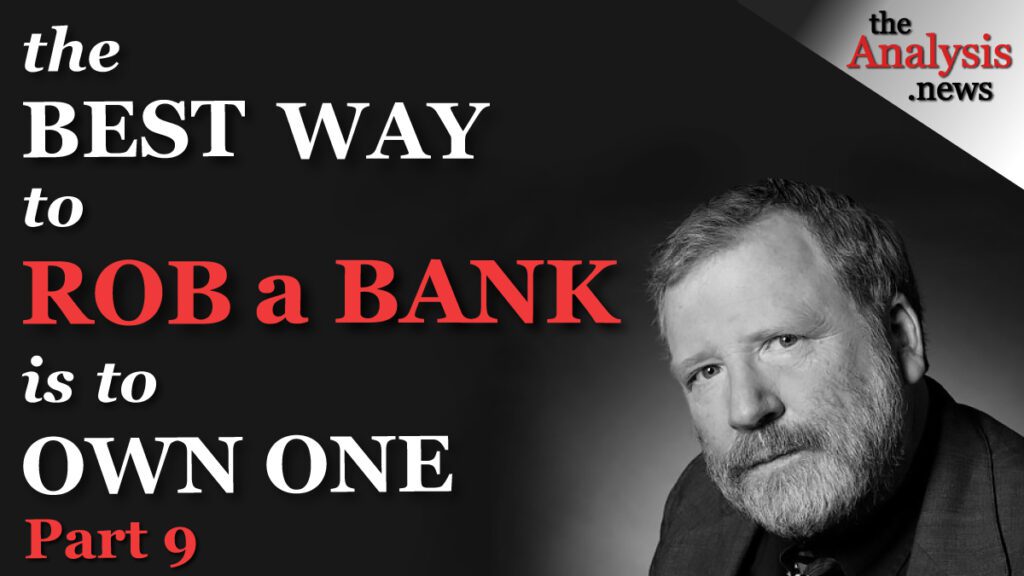
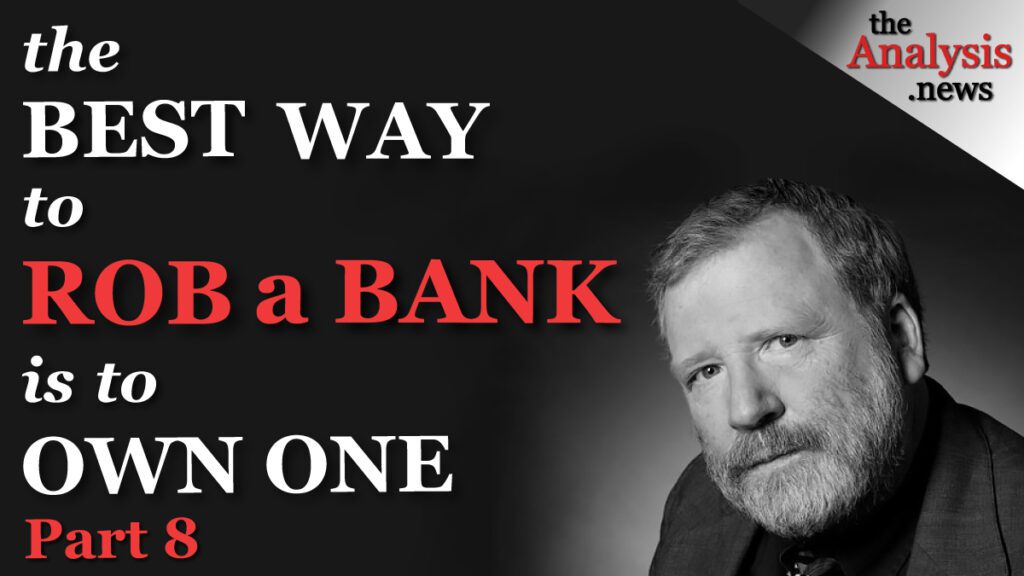
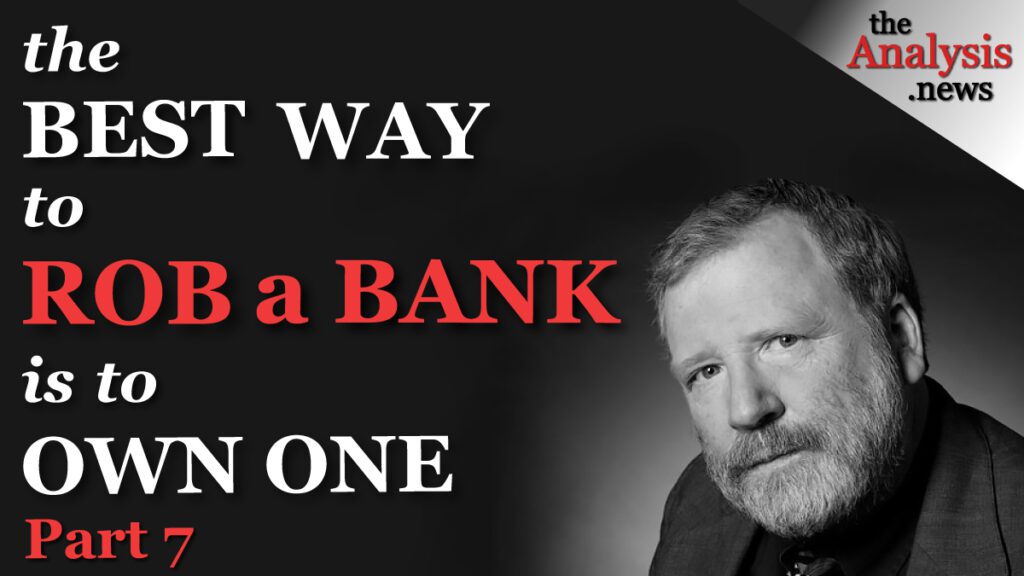
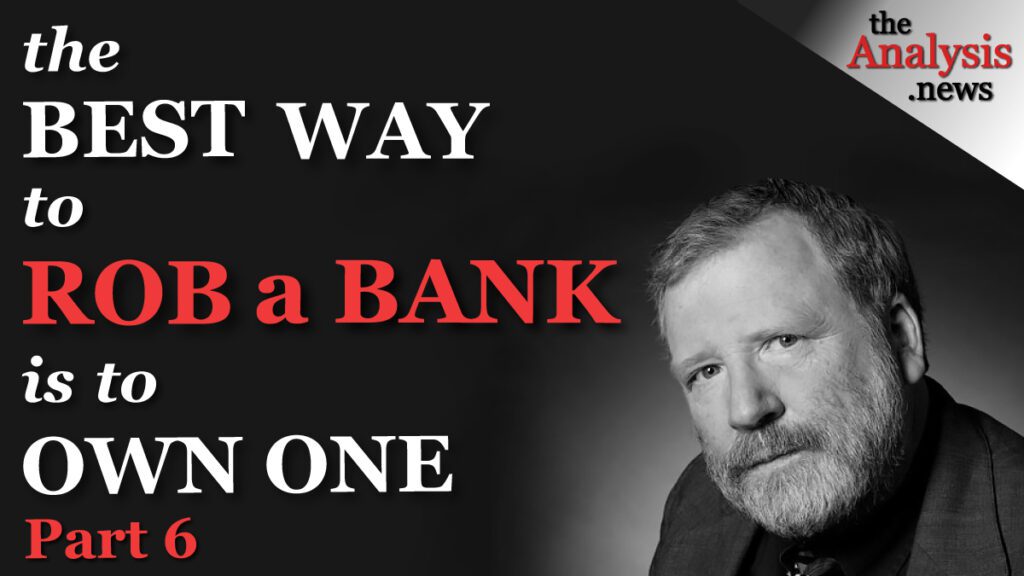
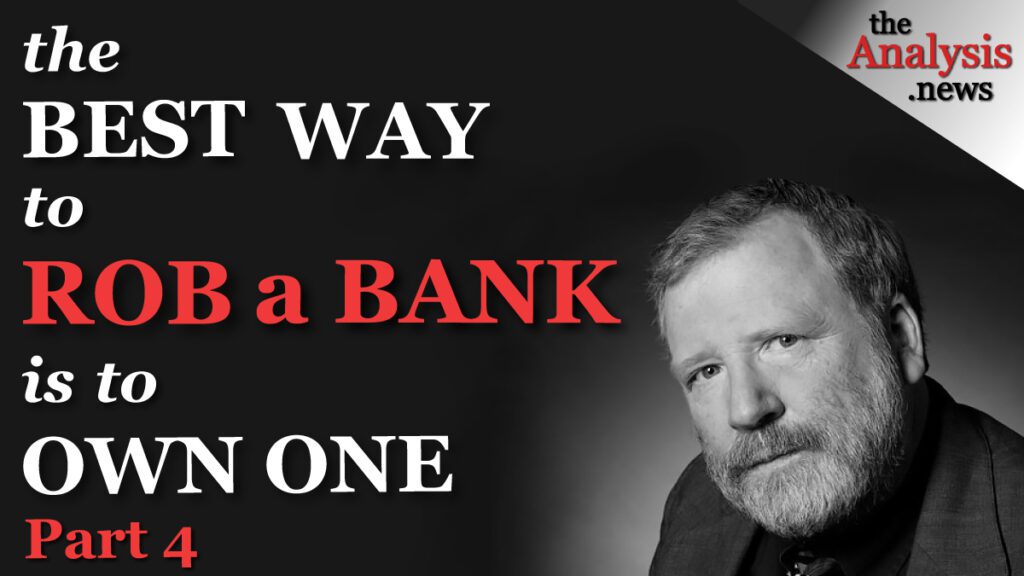
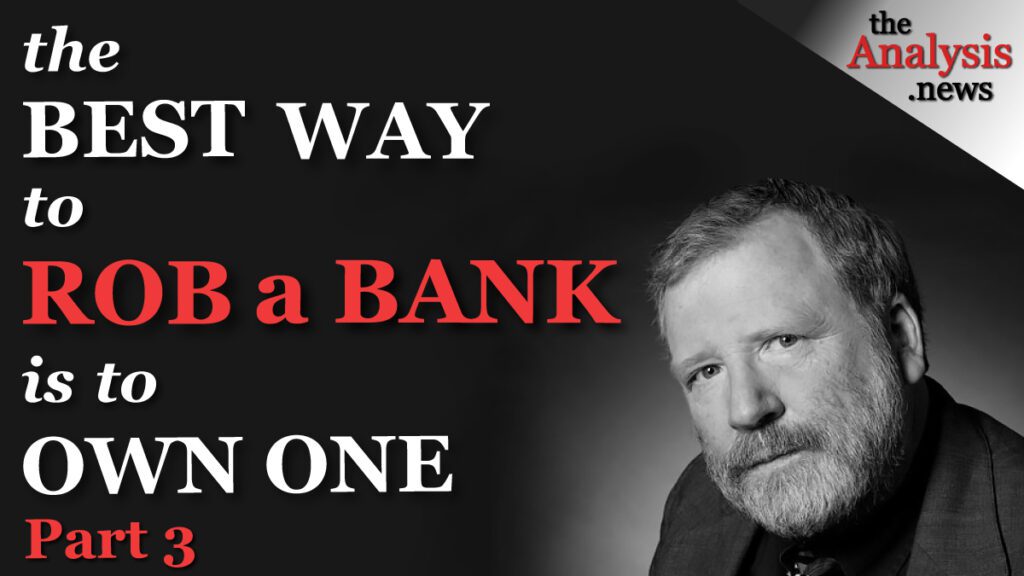
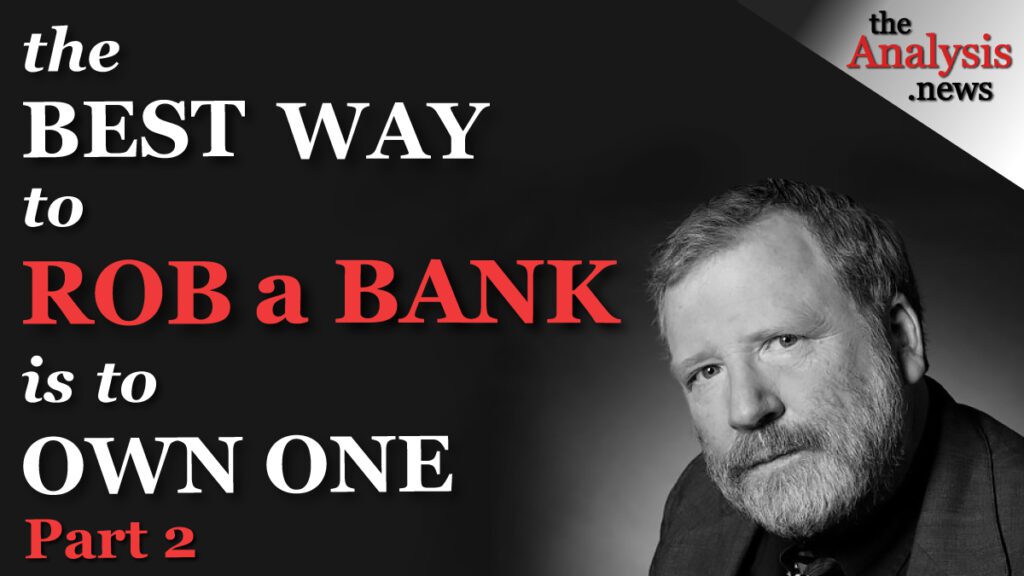
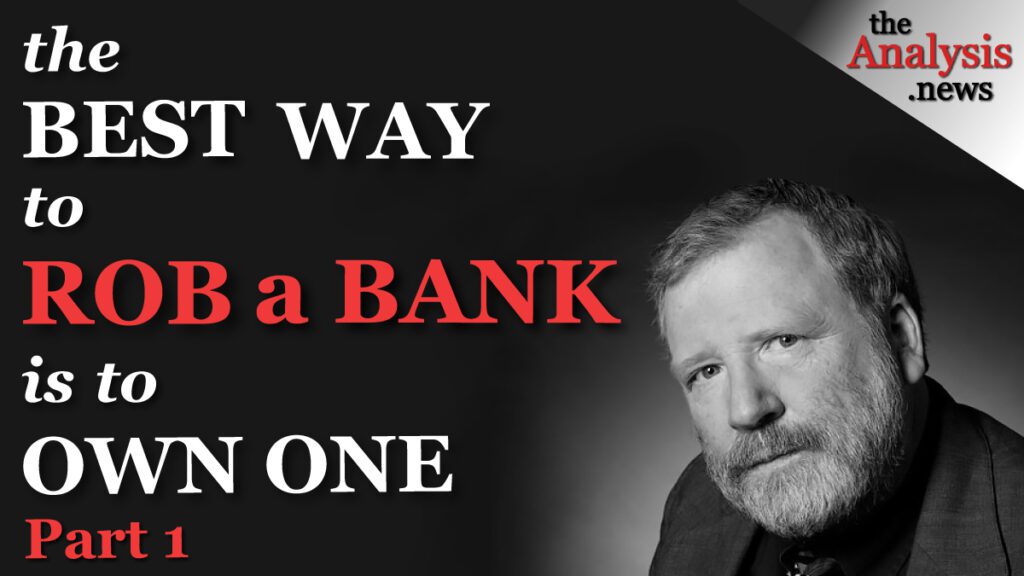
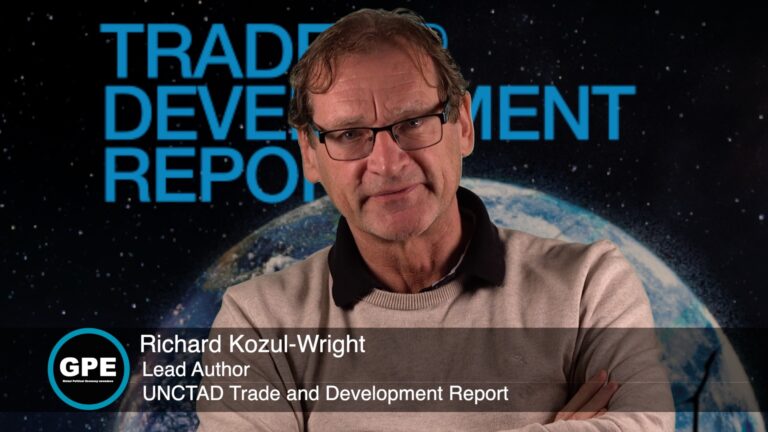
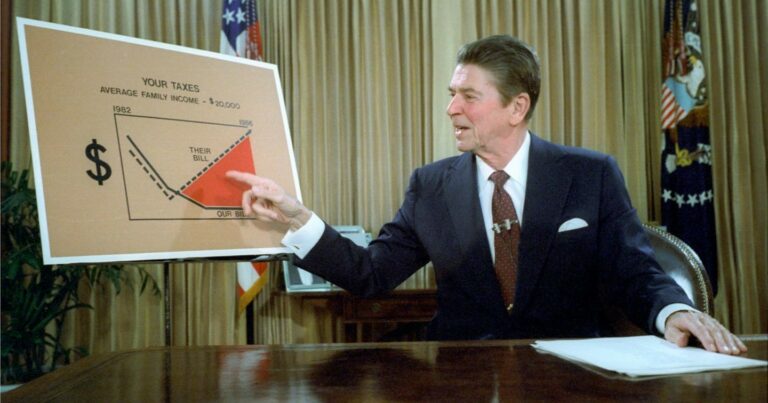

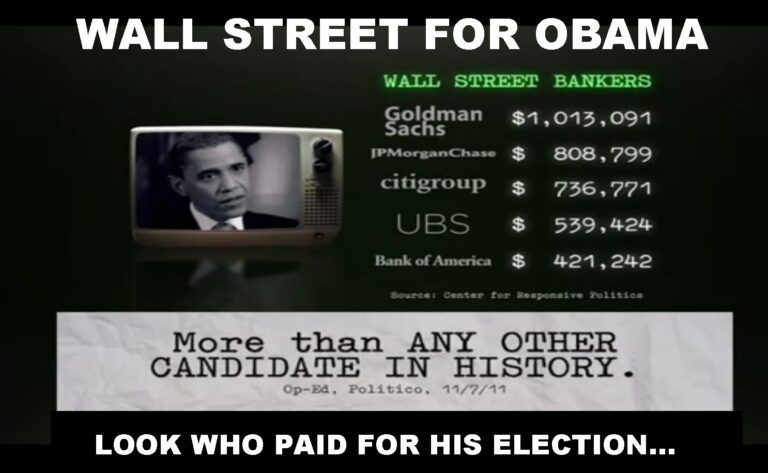
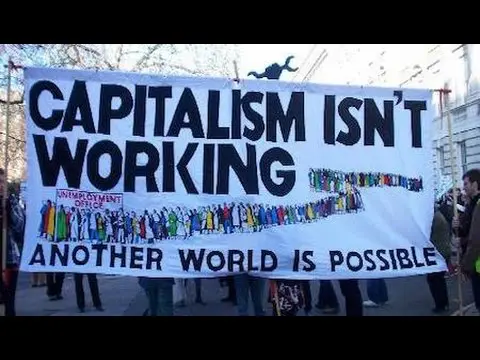
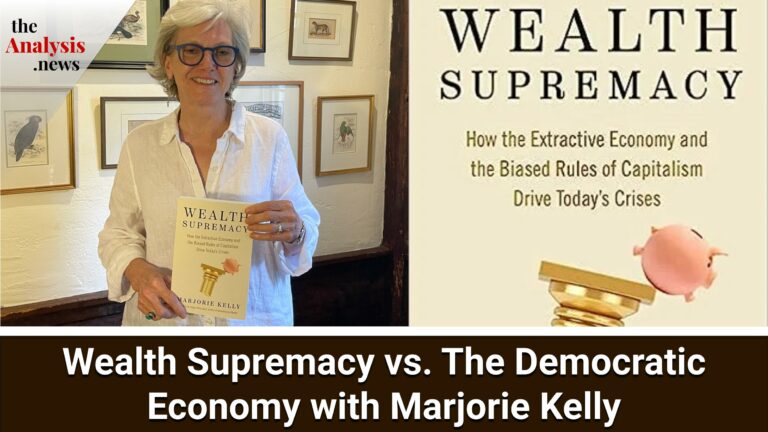
Still cant see the audio only access
It’s above the video player